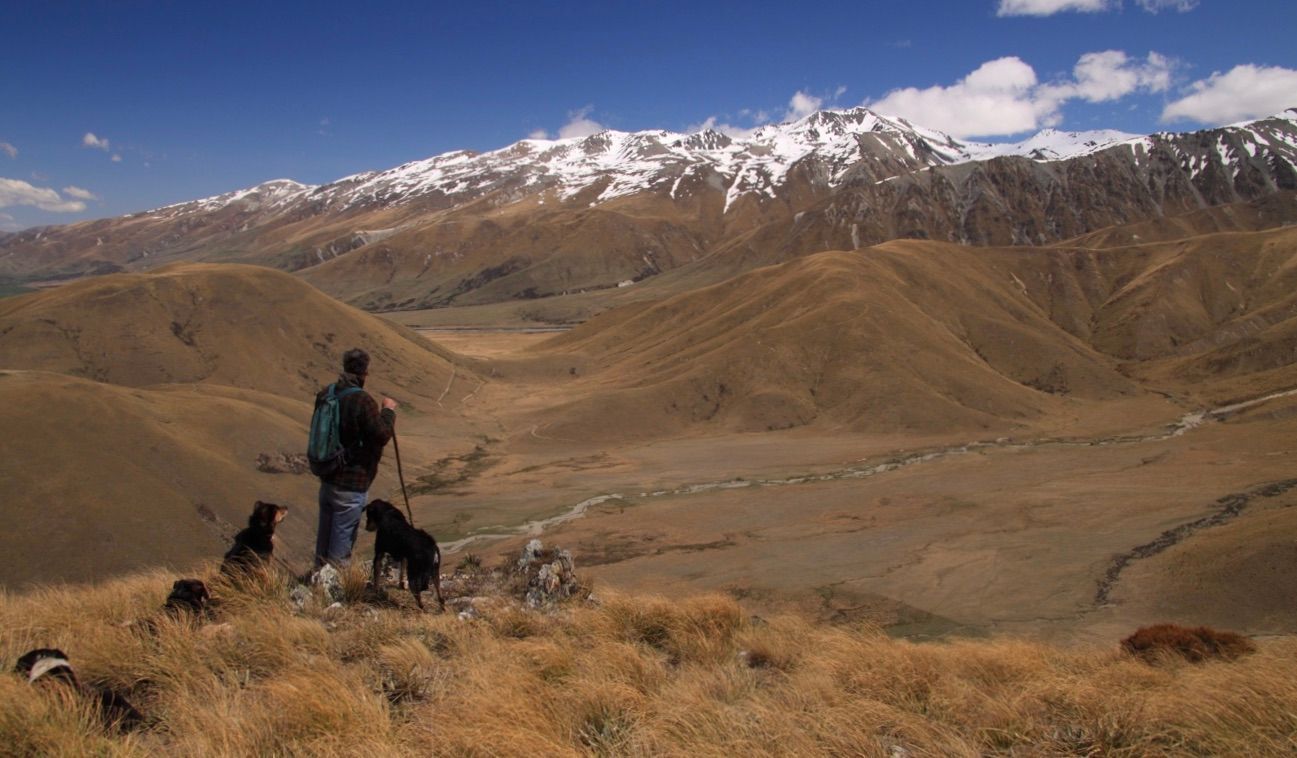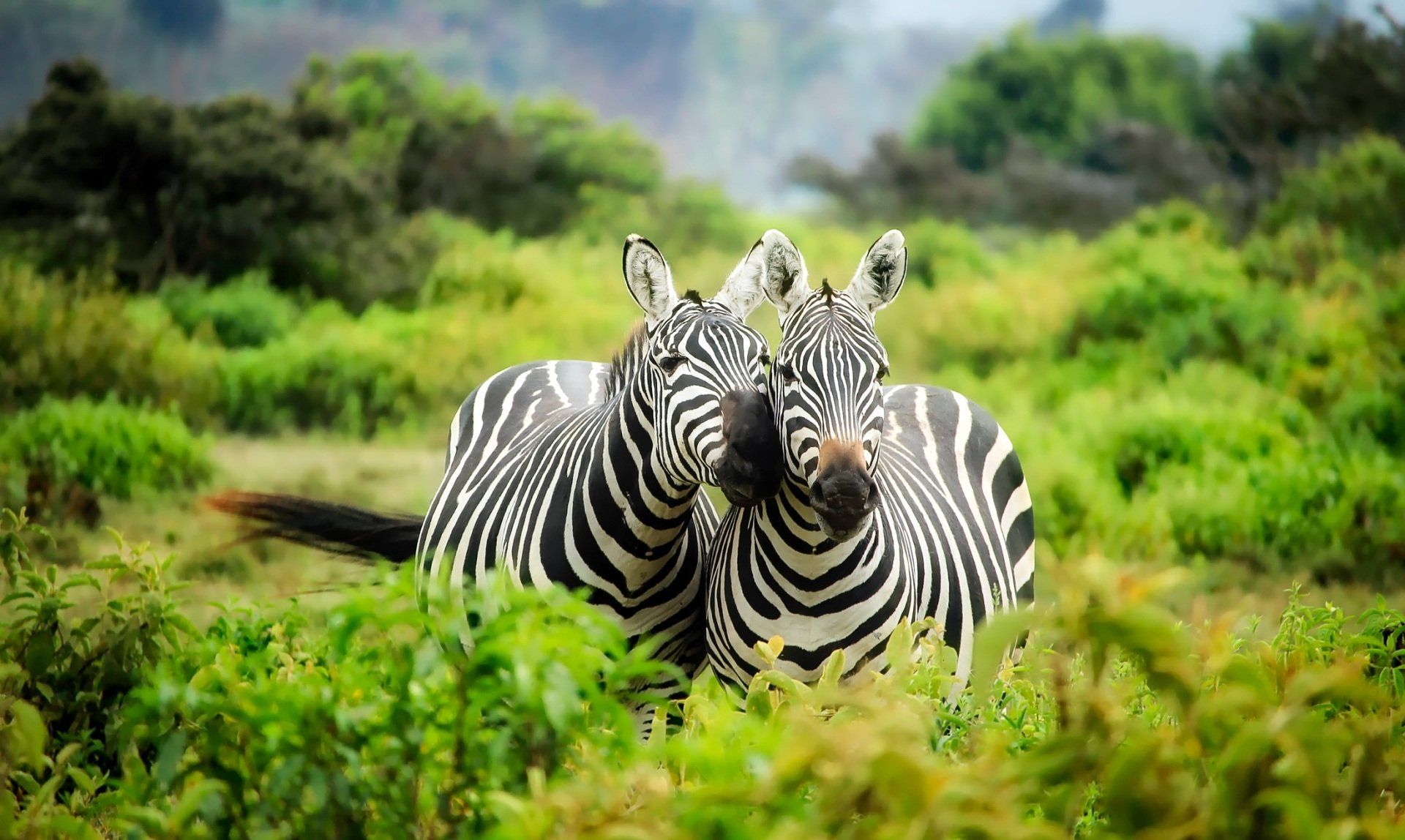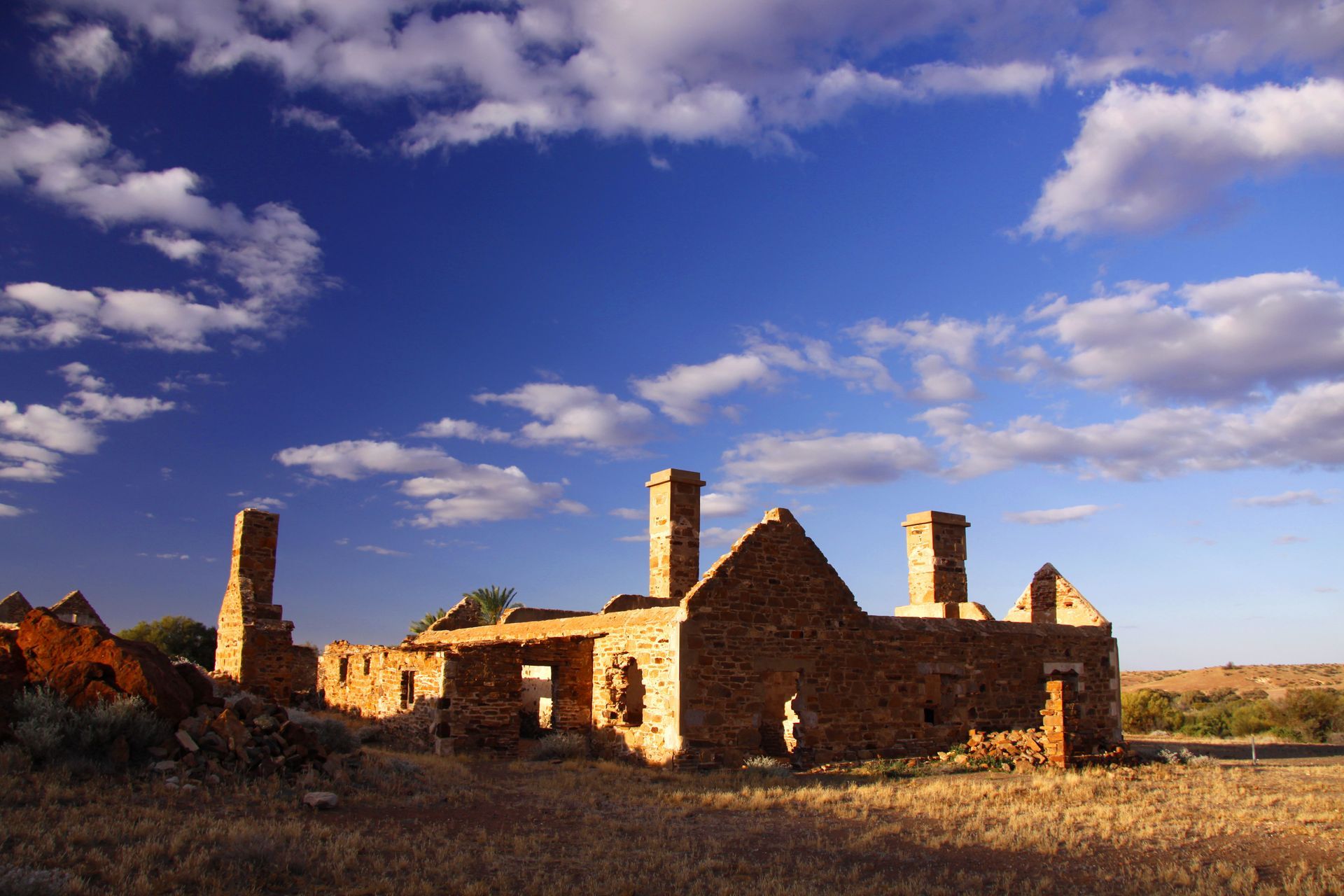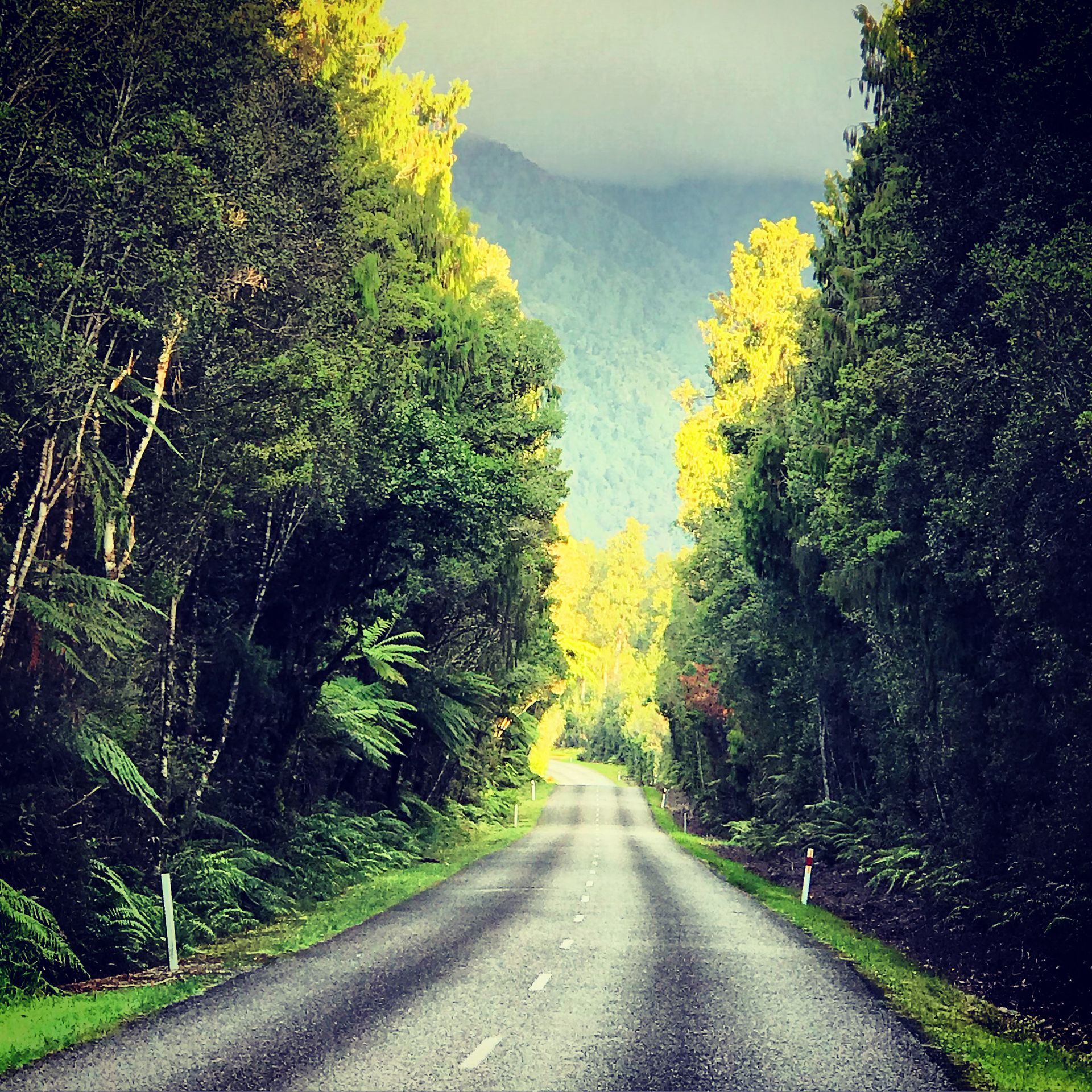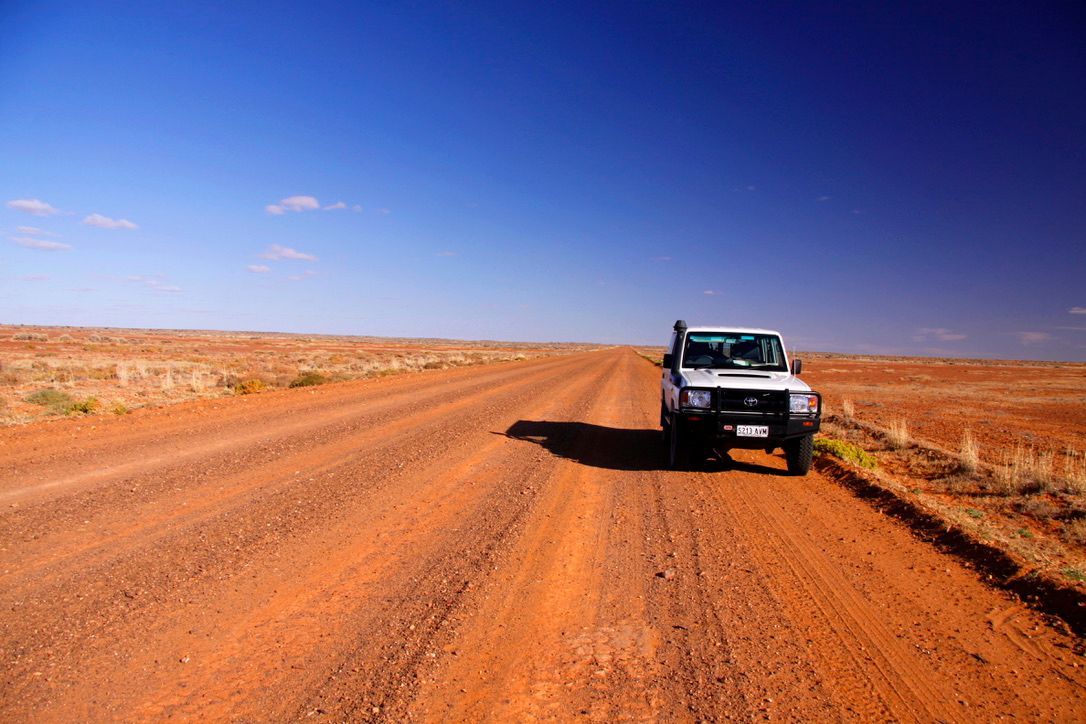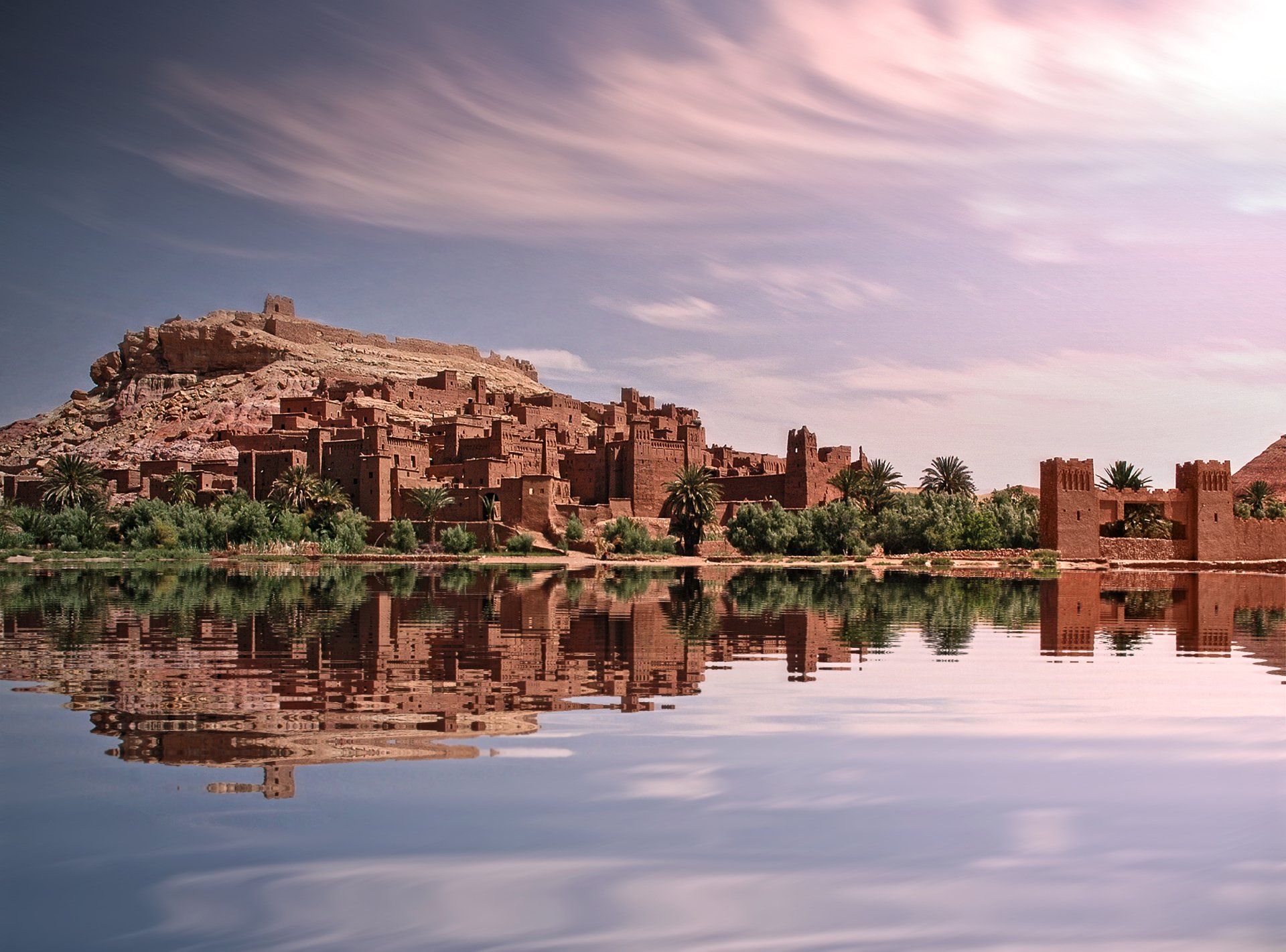The river stretches a braided thread of silver along the valley floor.
Morning in the High Country. On a hillside far above the Phantom River, a musterer gives his sheepdogs a command: “Speak up!” His four black and tan huntaways immediately set up a cacophony of loud barking. The musterer joins in with his own voice, shouting out “hey, hey, hey” into the still morning air. Even his heading dogs, Queen and Chucky, normally silent and observant, add a few high-pitched yaps into the mix.
High above, on top of the High Claytons range, another musterer’s dogs answer the bark-up. From below, the dogs of the three other men, who are spaced at intervals down the hillside, complete the chorus. The noise echoes back back from the gullies and ravines on the opposite side of the valley, which lies in deep, hazy shadow. The river stretches a braided thread of silver along the valley floor.
The barking alarms the merino wethers who have been grazing alone and in pairs on the tussock-clad hillside. It is early April and the fine-wooled wethers have spent the summer months roaming the hills of the station’s 35,000 acres. The sheep form themselves into long lines and move off ahead of the dogs’ noise. The musterers begin moving too, following the sheep south-west across the hillside towards the distant ramparts of the Two Thumb Range.

It is the third day of the autumn muster: an annual event which brings the sheep down off the high tops before the winter snows arrive. At 4am, the musterers had gathered for breakfast around the big kitchen table in the station’s homestead. Fortified with bacon, eggs, sausages and toast, washed down with copious quantities of tea, each of the five musterers had made a pile of sandwiches for lunch while the runholder explained each man’s beat (the route they would follow across the hillsides) for the day.

An hour later, as the rising sun cleared the triangular bulk of Mount Peel, the musterers were atop the High Claytons. In earlier times they would have spent three hours climbing out on foot. But these days, 4WDs are used to carry musterers and their dogs to the hilltops. Although the air has an early morning chill, the day promises to be sunny and hot.
The hills shimmer as alpine breezes ripple through the vast fields of snow tussock, which can grow to a height of a metre or more. As the musterers walk their beats through the steep, rocky faces they encounter not only wild deer and chamois, but dozens of Himalayan tahr. Introduced into the Southern Alps in 1904 these agile mountain goats can climb the most perpendicular rock faces with speed and grace.

For the shepherds and musterers who work on the High Country stations down the length of the South Island, work is slowly disappearing. Years of low wool prices have meant the farming of sheep has become less economically viable in the High Country. Vast tracts of land have been closed up or taken over by the conservation estate, and as the usage of the high country has changed, so the demand for high country mustering skills has diminished.
Mustering gangs once camped out for weeks at a time in backcountry huts where traditions and hierarchies were observed and maintained. Now, musters are completed in days using helicopters and 4WDs. Hobnailed boots, billy tea and camp ovens have been replaced by GPS locators, energy drinks and Vibram rubber soles.
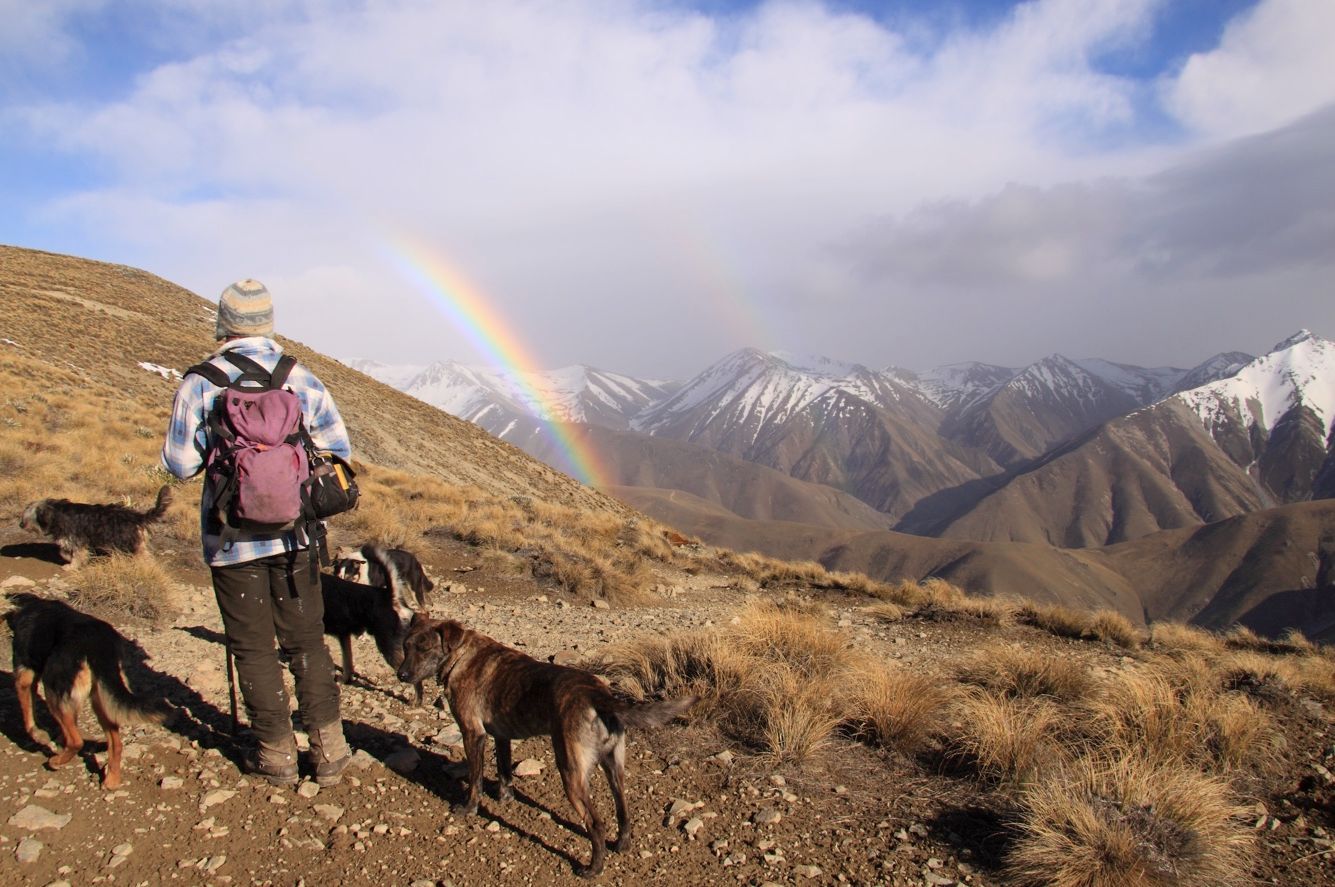
But change is an integral part of the High Country. The grey slopes of scree and shingle, the beetling bluffs of black rock and the endless ridges and summits – which generations of musterers, in typical understatement have simply called “The Hill” – are in a constant state of change as the elements shape and reshape the landscape.
By 2PM, the musterers are nearing the end of the block. The long lines of wethers, which have moved ahead of the musterers and their dogs all day, descend a steep ridge towards Spurs Flat. The huntaways keep the sheep moving while heading dogs cast left and right to bring individual sheep into the main mob which is gathering on the edge of the flat.
Each musterer controls his dogs with unique whistled commands. The older, experienced dogs instinctively watch the sheep, turning runaways back into the mob and keeping the animals moving. The younger dogs run boisterously alongside, learning the skills from their teammates and from the occasional profanity-laden command from their human masters.
The infant Orari River marks the end of the day’s muster. Beyond the river, which here is merely a trickle of crystal water bled from the snowfields of the Two Thumb Range, Horse Spur rises in a rounded fold of russet and gold tussock. The mob will be left on the spur to be gathered up tomorrow: the final day of the muster.
But the wethers, creatures of habit and suspicion, are reluctant to cross even this small creek bubbling across grey shingle between grassy banks smudged with matagouri. The dogs move the mob to the water’s edge. An older wether leaps across and soon the mob is following. The sheep string out across the hillside beyond.
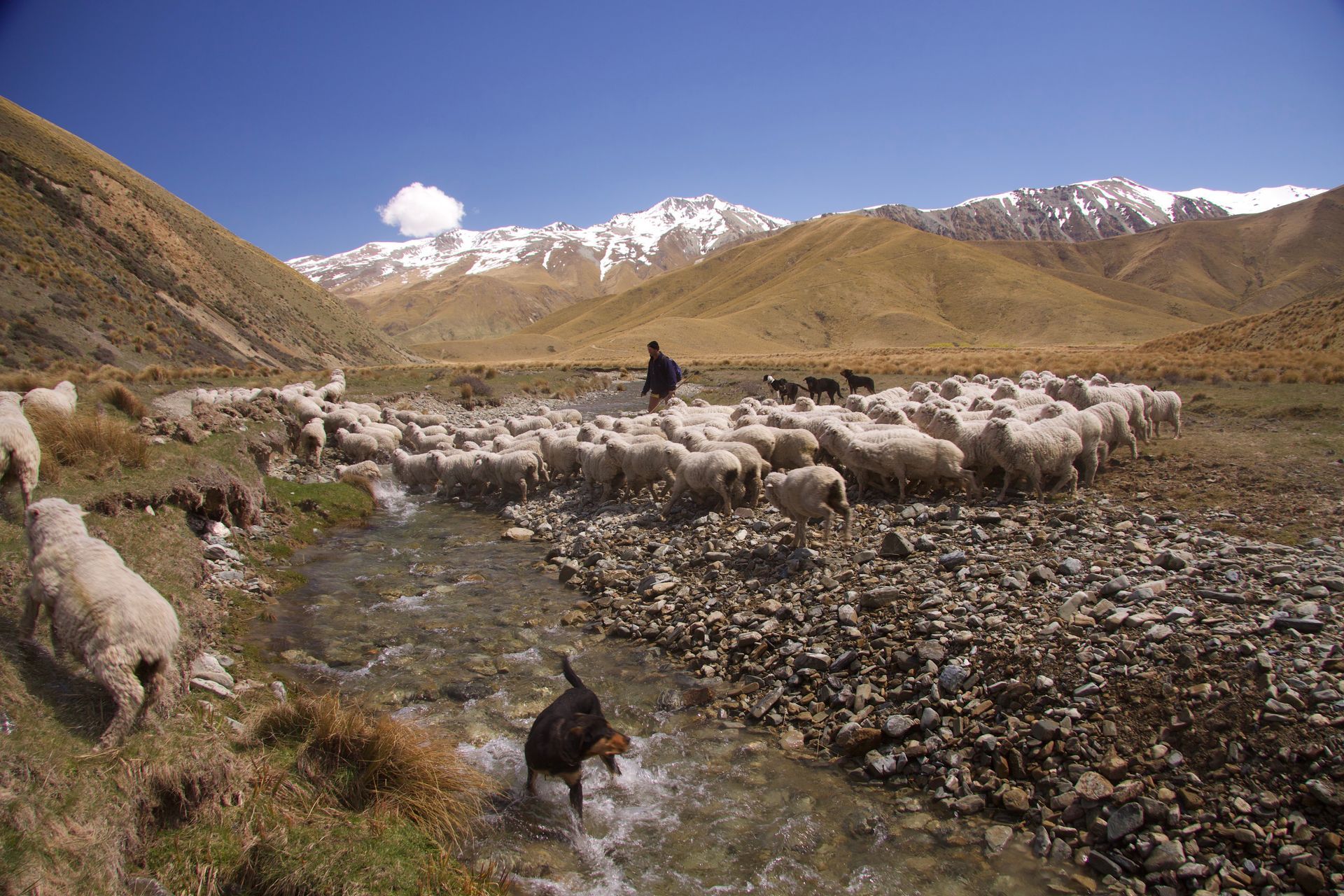
The musterers sit in the tussocks discussing the day’s work. Each has a story of good runs by their dogs and difficult sheep which had to be carefully extricated from a gully or ridge using cunning and skill. The runholder arrives in a 4WD with flasks of tea and a fruit cake. The dogs sprawl around in the sun, mark their territory with squirts of piss, occasionally snarling at errant youngsters.
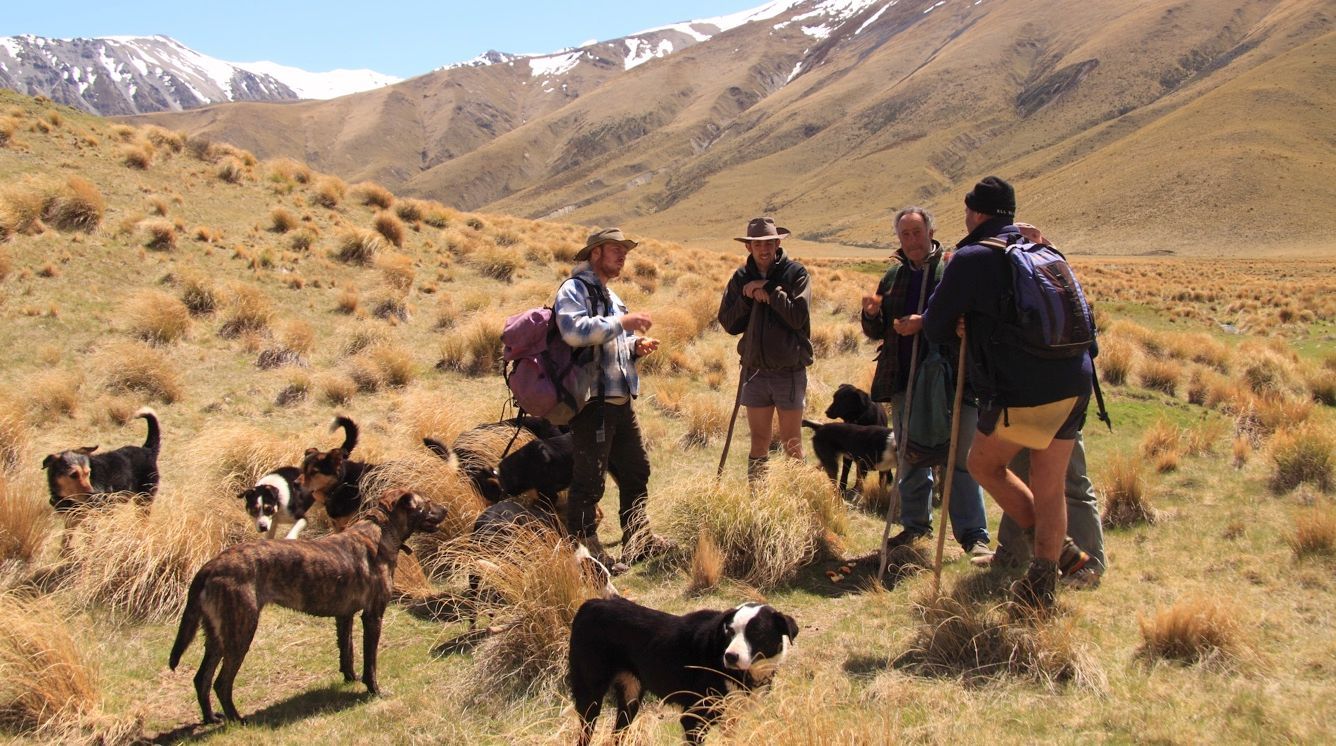
The wethers have dispersed across the face of Horse Spur. The afternoon sun glitters on the waters of the Orari River as it begins its journey down through the muscular hills. The musterers load their dogs onto the 4WD for the long journey back to the homestead.
At dawn tomorrow, the musterers and their dogs will once again be out here among the tussocks and rocks, mustering the Merino wethers ahead of them as they move across the flanks of the High Claytons like shadows on the hill.
